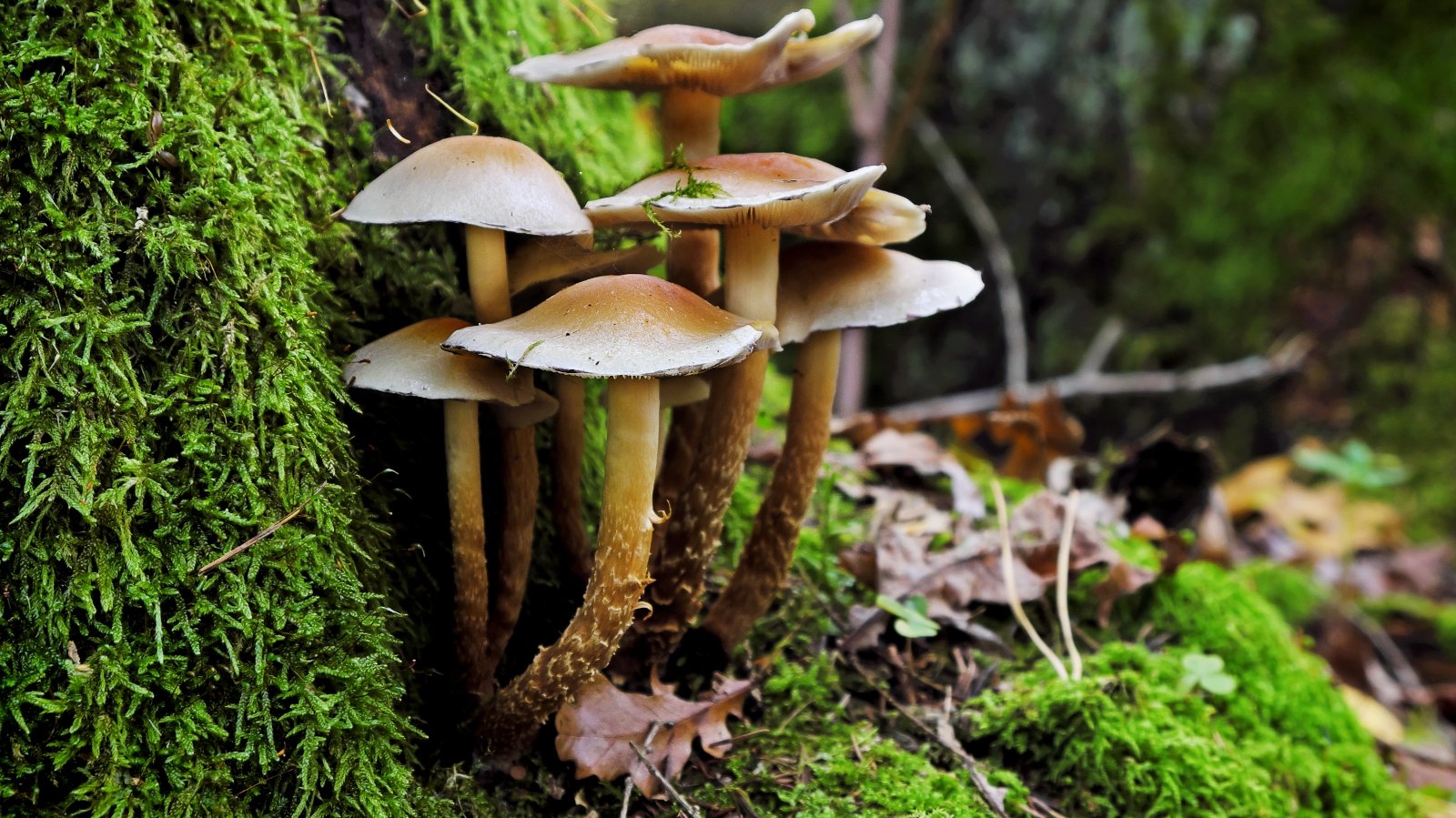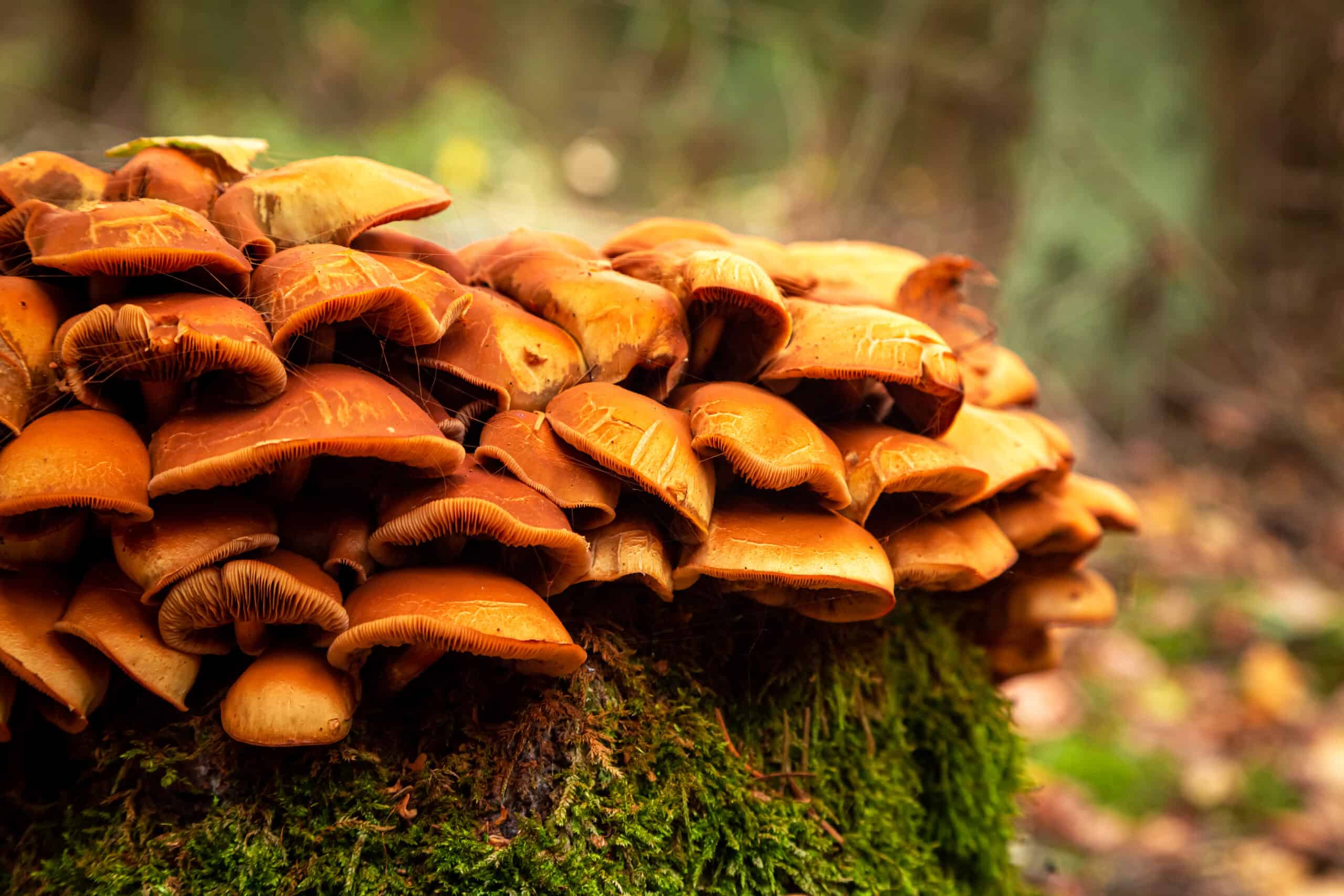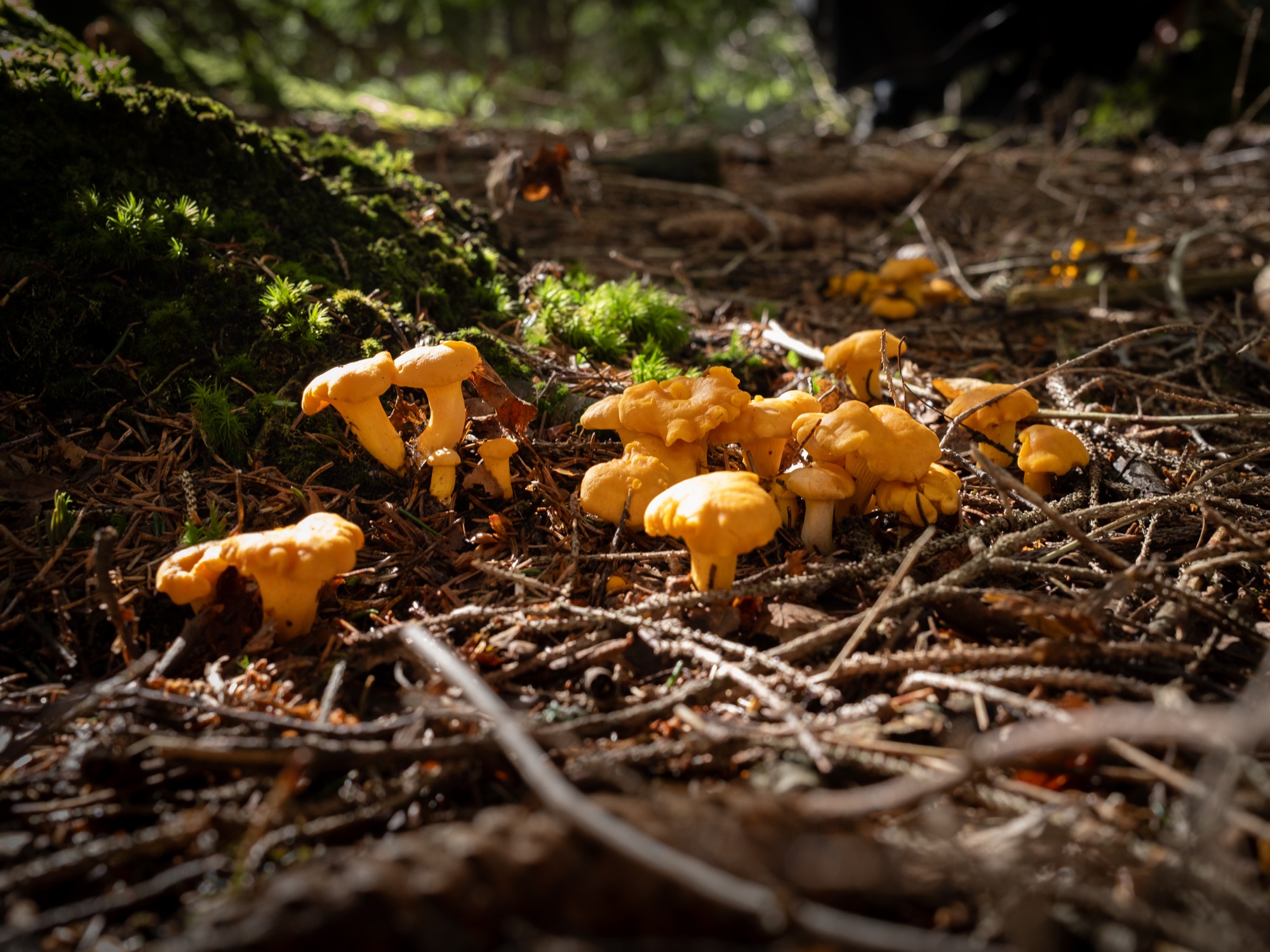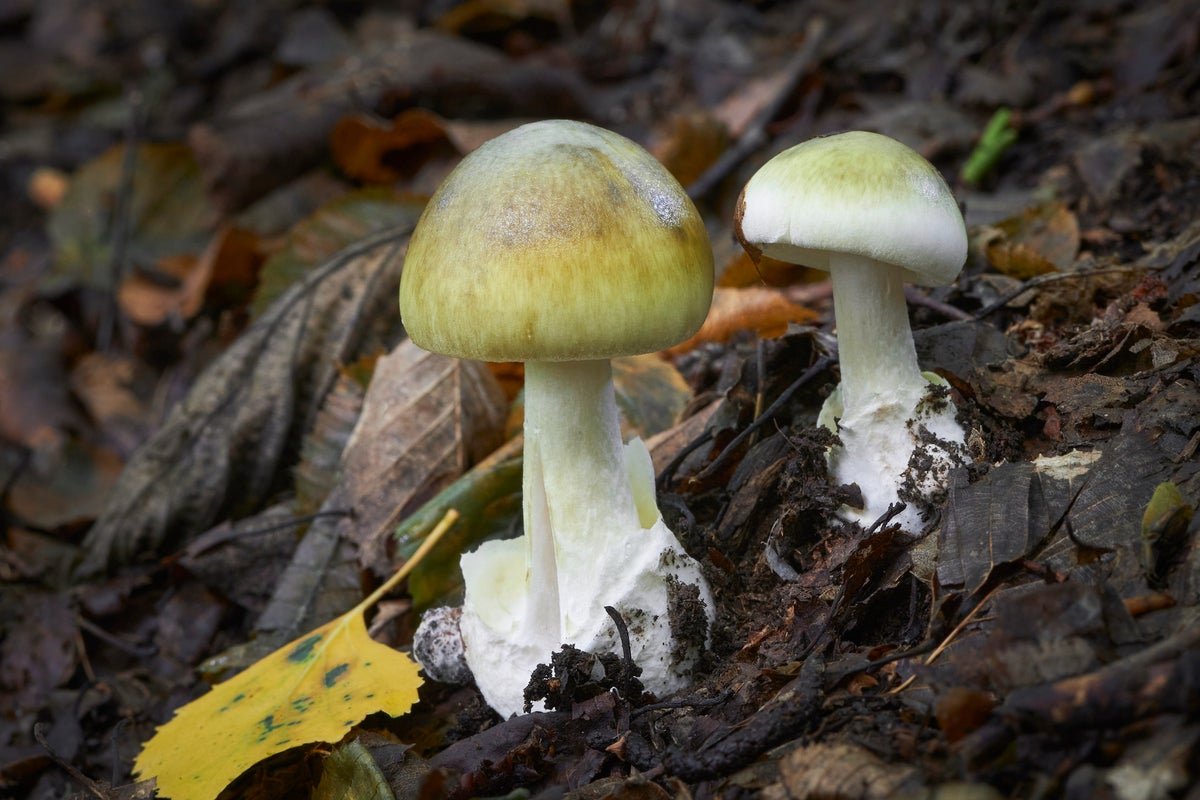Everything About Fungus 2
Parasitism in Humans
Many pathogenic fungi are parasitic in humans and are known to cause diseases of humans and other animals. In humans, parasitic fungi most commonly enter the body through a wound in the epidermis (skin). Such wounds may be insect punctures or accidentally inflicted scratches, cuts, or bruises. One example of a fungus that causes disease in humans is Claviceps purpurea, the cause of ergotism (also known as St. Anthony’s fire), a disease that was prevalent in northern Europe in the Middle Ages, particularly in regions of high rye-bread consumption.
The wind carries the fungal spores of ergot to the flowers of the rye, where the spores germinate, infect and destroy the ovaries of the plant, and replace them with masses of microscopic threads cemented together into a hard fungal structure shaped like a rye kernel but considerably larger and darker. This structure, called an ergot, contains a number of poisonous organic compounds called alkaloids. A mature head of rye may carry several ergots in addition to noninfected kernels. When the grain is harvested, much of the ergot falls to the ground, but some remains on the plants and is mixed with the grain.
Although modern grain-cleaning and milling methods have practically eliminated the disease, the contaminated flour may end up in bread and other food products if the ergot is not removed before milling. In addition, the ergot that falls to the ground may be consumed by cattle turned out to graze in rye fields after harvest. Cattle that consume enough ergot may suffer abortion of fetuses or death. In the spring, when the rye is in bloom, the ergot remaining on the ground produces tiny, black, mushroom-shaped bodies that expel large numbers of spores, thus starting a new series of infections.
Other human diseases caused by fungi include athlete’s foot, ringworm, aspergillosis, histoplasmosis, and coccidioidomycosis. The yeast Candida albicans, a normal inhabitant of the human mouth, throat, colon, and reproductive organs, does not cause disease when it is in ecological balance with other microbes of the digestive system. However, disease, age, and hormonal changes can cause C. albicans to grow in a manner that cannot be controlled by the body’s defense systems, resulting in candidiasis (called thrush when affecting the mouth). Candidiasis is characterized by symptoms ranging from irritating inflamed patches on the skin or raised white patches on the tongue to life-threatening invasive infection that damages the lining of the heart or brain. Improved diagnosis and increased international travel, the latter of which has facilitated the spread of tropical pathogenic fungi, have resulted in an increased incidence of fungal disease in humans. In addition, drug therapies used to manage the immune system in transplant and cancer patients weaken the body’s defenses against fungal pathogens. Patients infected with human immunodeficiency virus (HIV), the causative agent of acquired immunodeficiency syndrome (AIDS), have similarly weakened immune defenses against fungi, and many AIDS-related deaths are caused by fungal infections (especially infection with Aspergillus fumigatus).
Mycorrhiza
Among symbiotic fungi, those that enter into mycorrhizal relationships and those that enter into relationships with algae to form lichens (see below Form and function of lichens) are probably the best-known. A large number of fungi infect the roots of plants by forming an association with plants called mycorrhiza (plural mycorrhizas or mycorrhizae). This association differs markedly from ordinary root infection, which is responsible for root rot diseases. Mycorrhiza is a non-disease-producing association in which the fungus invades the root to absorb nutrients. Mycorrhizal fungi establish a mild form of parasitism that is mutualistic, meaning both the plant and the fungus benefit from the association. About 90 percent of land plants rely on mycorrhizal fungi, especially for mineral nutrients (i.e., phosphorus), and in return the fungus receives nutrients formed by the plant. During winter, when day length is shortened and exposure to sunlight is reduced, some plants produce few or no nutrients and thus depend on fungi for sugars, nitrogenous compounds, and other nutrients that the fungi are able to absorb from waste materials in the soil. By sharing the products it absorbs from the soil with its plant host, a fungus can keep its host alive. In some lowland forests, the soil contains an abundance of mycorrhizal fungi, resulting in mycelial networks that connect the trees together. The trees and their seedlings can use the fungal mycelium to exchange nutrients and chemical messages.
There are two main types of mycorrhiza: ectomycorrhizae and endomycorrhizae. Ectomycorrhizae are fungi that are only externally associated with the plant root, whereas endomycorrhizae form their associations within the cells of the host.
Among the mycorrhizal fungi are boletes, whose mycorrhizal relationships with larch trees (Larix) and other conifers have long been known. Other examples include truffles, some of which are believed to form mycorrhizae with oak (Quercus) or beech (Fagus) trees. Many orchids form mycorrhizae with species of Rhizoctonia that provide seedlings of the orchid host with carbohydrate obtained by degradation of organic matter in the soil.
Predation
A number of fungi have developed ingenious mechanisms for trapping microorganisms such as amoebas, roundworms (nematodes), and rotifers. After the prey is captured, the fungus uses hyphae to penetrate and quickly destroy the prey. Many of these fungi secrete adhesive substances over the surface of their hyphae, causing a passing animal that touches any portion of the mycelium to adhere firmly to the hyphae. For example, the mycelia of oyster mushrooms (genus Pleurotus) secrete adhesives onto their hyphae in order to catch nematodes. Once a passing animal is caught, a penetration tube grows out of a hypha and penetrates the host’s soft body. This haustorium grows and branches and then secretes enzymes that quickly kill the animal, whose cytoplasm serves as food for the fungus.
Other fungi produce hyphal loops that ensnare small animals, thereby allowing the fungus to use its haustoria to penetrate and kill a trapped animal. Perhaps the most amazing of these fungal traps are the so-called constricting rings of some species of Arthrobotrys, Dactylella, and Dactylaria—soil-inhabiting fungi easily grown under laboratory conditions. In the presence of nematodes, the mycelium produces large numbers of rings through which the average nematode is barely able to pass. When a nematode rubs the inner wall of a ring, which usually consists of three cells with touch-sensitive inner surfaces, the cells of the ring swell rapidly, and the resulting constriction holds the worm tightly. All efforts of the nematode to free itself fail, and a hypha, which grows out of one of the swollen ring cells at its point of contact with the worm, penetrates and branches within the animal’s body, thereby killing the animal. The dead animal is then used for food by the fungus. In the absence of nematodes, these fungi do not usually produce rings in appreciable quantities. A substance secreted by nematodes stimulates the fungus to form the mycelial rings.
Reproductive processes of fungi
Following a period of intensive growth, fungi enter a reproductive phase by forming and releasing vast quantities of spores. Spores are usually single cells produced by fragmentation of the mycelium or within specialized structures (sporangia, gametangia, sporophores, etc.). Spores may be produced either directly by asexual methods or indirectly by sexual reproduction. Sexual reproduction in fungi, as in other living organisms, involves the fusion of two nuclei that are brought together when two sex cells (gametes) unite. Asexual reproduction, which is simpler and more direct, may be accomplished by various methods.
Asexual reproduction
Typically in asexual reproduction, a single individual gives rise to a genetic duplicate of the progenitor without a genetic contribution from another individual. Perhaps the simplest method of reproduction of fungi is by fragmentation of the thallus, the body of a fungus. Some yeasts, which are single-celled fungi, reproduce by simple cell division, or fission, in which one cell undergoes nuclear division and splits into two daughter cells; after some growth, these cells divide, and eventually a population of cells forms. In filamentous fungi the mycelium may fragment into a number of segments, each of which is capable of growing into a new individual. In the laboratory, fungi are commonly propagated on a layer of solid nutrient agar inoculated either with spores or with fragments of mycelium.
Budding, which is another method of asexual reproduction, occurs in most yeasts and in some filamentous fungi. In this process, a bud develops on the surface of either the yeast cell or the hypha, with the cytoplasm of the bud being continuous with that of the parent cell. The nucleus of the parent cell then divides; one of the daughter nuclei migrates into the bud, and the other remains in the parent cell. The parent cell is capable of producing many buds over its surface by continuous synthesis of cytoplasm and repeated nuclear divisions. After a bud develops to a certain point and even before it is severed from the parent cell, it is itself capable of budding by the same process. In this way, a chain of cells may be produced. Eventually, the individual buds pinch off the parent cell and become individual yeast cells. Buds that are pinched off a hypha of a filamentous fungus behave as spores; that is, they germinate, each giving rise to a structure called a germ tube, which develops into a new hypha.
Although fragmentation, fission, and budding are methods of asexual reproduction in a number of fungi, the majority reproduce asexually by the formation of spores. Spores that are produced asexually are often termed mitospores, and such spores are produced in a variety of ways.
Sexual reproduction
Sexual reproduction, an important source of genetic variability, allows the fungus to adapt to new environments. The process of sexual reproduction among the fungi is in many ways unique. Whereas nuclear division in other eukaryotes, such as animals, plants, and protists, involves the dissolution and re-formation of the nuclear membrane, in fungi the nuclear membrane remains intact throughout the process, although gaps in its integrity are found in some species. The nucleus of the fungus becomes pinched at its midpoint, and the diploid chromosomes are pulled apart by spindle fibres formed within the intact nucleus. The nucleolus is usually also retained and divided between the daughter cells, although it may be expelled from the nucleus, or it may be dispersed within the nucleus but detectable.:max_bytes(150000):strip_icc()/amethyst-deceiver-mushrooms-1329276825-643a3613450e4c9289e60e870e5a0da7.jpg)
Sexual reproduction in the fungi consists of three sequential stages: plasmogamy, karyogamy, and meiosis. The diploid chromosomes are pulled apart into two daughter cells, each containing a single set of chromosomes (a haploid state). Plasmogamy, the fusion of two protoplasts (the contents of the two cells), brings together two compatible haploid nuclei. At this point, two nuclear types are present in the same cell, but the nuclei have not yet fused. Karyogamy results in the fusion of these haploid nuclei and the formation of a diploid nucleus (i.e., a nucleus containing two sets of chromosomes, one from each parent). The cell formed by karyogamy is called the zygote. In most fungi the zygote is the only cell in the entire life cycle that is diploid. The dikaryotic state that results from plasmogamy is often a prominent condition in fungi and may be prolonged over several generations. In the lower fungi, karyogamy usually follows plasmogamy almost immediately. In the more evolved fungi, however, karyogamy is separated from plasmogamy. Once karyogamy has occurred, meiosis (cell division that reduces the chromosome number to one set per cell) generally follows and restores the haploid phase. The haploid nuclei that result from meiosis are generally incorporated in spores called meiospores.
Fungi employ a variety of methods to bring together two compatible haploid nuclei (plasmogamy). Some produce specialized sex cells (gametes) that are released from differentiated sex organs called gametangia. In other fungi two gametangia come in contact, and nuclei pass from the male gametangium into the female, thus assuming the function of gametes. In still other fungi the gametangia themselves may fuse in order to bring their nuclei together. Finally, some of the most advanced fungi produce no gametangia at all; the somatic (vegetative) hyphae take over the sexual function, come in contact, fuse, and exchange nuclei.
Fungi in which a single individual bears both male and female gametangia are hermaphroditic fungi. Rarely, gametangia of different sexes are produced by separate individuals, one a male, the other a female. Such species are termed dioecious. Dioecious species usually produce sex organs only in the presence of an individual of the opposite sex.
Sexual incompatibility
Many of the simpler fungi produce differentiated male and female organs on the same thallus but do not undergo self-fertilization because their sex organs are incompatible. Such fungi require the presence of thalli of different mating types in order for sexual fusion to take place. The simplest form of this mechanism occurs in fungi in which there are two mating types, often designated + and − (or A and a). Gametes produced by one type of thallus are compatible only with gametes produced by the other type. Such fungi are said to be heterothallic. Many fungi, however, are homothallic; i.e., sex organs produced by a single thallus are self-compatible, and a second thallus is unnecessary for sexual reproduction. Some of the most complex fungi (e.g., mushrooms) do not develop differentiated sex organs; rather, the sexual function is carried out by their somatic hyphae, which unite and bring together compatible nuclei in preparation for fusion. Homothallism and heterothallism are encountered in fungi that have not developed differentiated sex organs, as well as in fungi in which sex organs are easily distinguishable. Compatibility therefore refers to a physiological differentiation, and sex refers to a morphological (structural) one; the two phenomena, although related, are not synonymous.
Sexual pheromones
The formation of sex organs in fungi is often induced by specific organic substances. Although called sex hormones when first discovered, these organic substances are actually sex pheromones, chemicals produced by one partner to elicit a sexual response in the other. In Allomyces (order Blastocladiales) a pheromone named sirenin, secreted by the female gametes, attracts the male gametes, which swim toward the former and fuse with them. In some simple fungi, which may have gametangia that are not differentiated structurally, a complex biochemical interplay between mating types produces trisporic acid, a pheromone that induces the formation of specialized aerial hyphae. Volatile intermediates in the trisporic acid synthetic pathway are interchanged between the tips of opposite mating aerial hyphae, causing the hyphae to grow toward each other and fuse together. In yeasts belonging to the phyla Ascomycota and Basidiomycota, the pheromones are small peptides. Several pheromone genes have been identified and characterized in filamentous ascomycetes and basidiomycetes.
Life cycle of fungi
In the life cycle of a sexually reproducing fungus, a haploid phase alternates with a diploid phase. The haploid phase ends with nuclear fusion, and the diploid phase begins with the formation of the zygote (the diploid cell resulting from fusion of two haploid sex cells). Meiosis (reduction division) restores the haploid number of chromosomes and initiates the haploid phase, which produces the gametes. In the majority of fungi, all structures are haploid except the zygote. Nuclear fusion takes place at the time of zygote formation, and meiosis follows immediately. Only in Allomyces and a few related genera and in some yeasts is alternation of a haploid thallus with a diploid thallus definitely known.
In the higher fungi a third condition is interspersed between the haploid and diploid phases of the life cycle. In these fungi, plasmogamy (fusion of the cellular contents of two hyphae but not of the two haploid nuclei) results in dikaryotic hyphae in which each cell contains two haploid nuclei, one from each parent. Eventually, the nuclear pair fuses to form the diploid nucleus and thus the zygote. In the Basidiomycota, binucleate cells divide successively and give rise to a binucleate mycelium, which is the main assimilative phase of the life cycle. It is the binucleate mycelium that eventually forms the basidia—the stalked fruiting bodies in which nuclear fusion and meiosis take place prior to the formation of the basidiospores.
Fungi usually reproduce both sexually and asexually. The asexual cycle produces mitospores, and the sexual cycle produces meiospores. Even though both types of spores are produced by the same mycelium, they are very different in form and easily distinguished (see above Sporophores and spores). The asexual phase usually precedes the sexual phase in the life cycle and may be repeated frequently before the sexual phase appears.
Some fungi differ from others in their lack of one or the other of the reproductive stages. For example, some fungi reproduce only sexually (except for fragmentation, which is common in most fungi), whereas others reproduce only asexually. A number of fungi exhibit the phenomenon of parasexuality, in which processes comparable to plasmogamy, karyogamy, and meiosis take place. However, these processes do not occur at a specified time or at specified points in the life cycle of the organism. As a result, parasexuality is characterized by the prevalence of heterokaryosis in a mycelium—i.e., the presence, side by side, of nuclei of different genetic composition.
Ecology of fungi
Relatively little is known of the effects of the environment on the distribution of fungi that utilize dead organic material as food (i.e., saprobic fungi; see above Nutrition). The availability of organic food is certainly one of the factors controlling such distribution. A great number of fungi appear able to utilize most types of organic materials, such as lignin, cellulose, or other polysaccharides, which have been added to soils or waters by dead vegetation. Most saprotrophic fungi are widely distributed throughout the world, only requiring that their habitats have sufficient organic content to support their growth. However, some saprotrophs are strictly tropical and others are strictly temperate-zone forms; fungi with specific nutritional requirements are even further localized.
Moisture and temperature are two additional ecological factors that are important in determining the distribution of fungi. Laboratory studies have shown that many, perhaps the majority, of fungi are mesophilic, meaning they have an optimum growth temperature of 20–30 °C (68–86 °F). Thermophilic species are able to grow at 50 °C (122 °F) or higher but are unable to grow below 30 °C. Although the optimum temperature for growth of most fungi lies at or above 20 °C, a large number of species are able to grow close to or below 0 °C (32 °F). The so-called snow molds and the fungi that cause spoilage of refrigerated foods are examples of this group. Obviously, temperature relationships influence the distribution of various species. Certain other effects of temperature are also important factors in determining the habitats of fungi. Many coprophilous (dung-inhabiting) fungi, such as Pilobolus, although able to grow at a temperature of 20–30 °C, require a short period at 60 °C (140 °F) for their spores to germinate.
Source
https://en.wikipedia.org/wiki/Mushroom
https://www.britannica.com/science/mushroom
https://mushroommountain.com/meet-the-mushrooms/
https://www.countryliving.com/food-drinks/g29993727/types-of-mushrooms/
https://www.mushroomcouncil.com/mushroom-101/varieties/







































